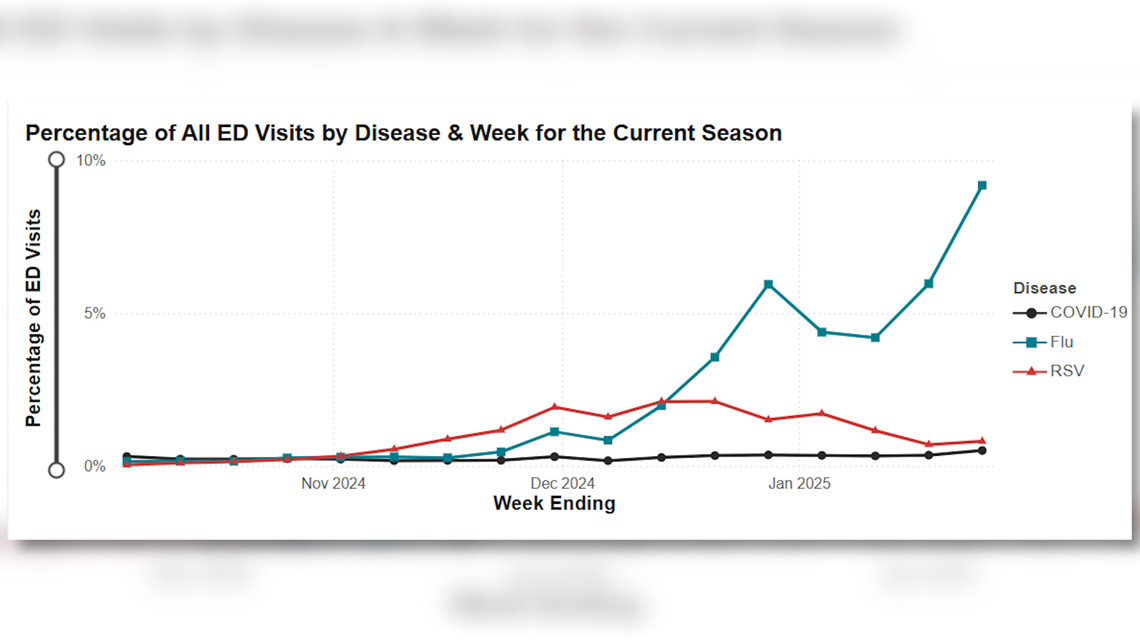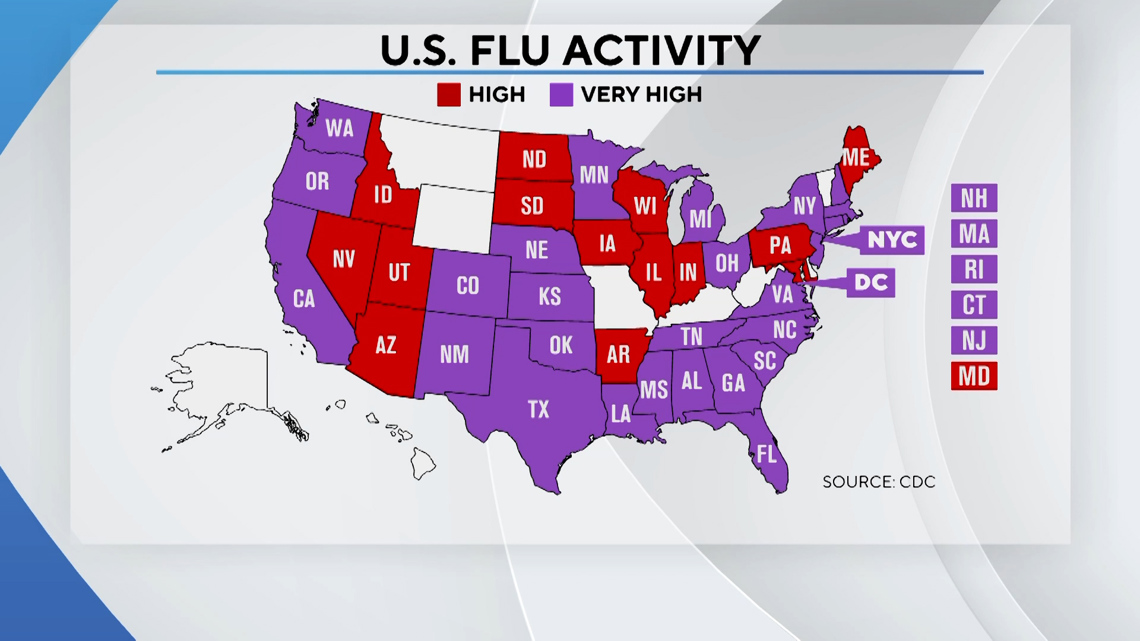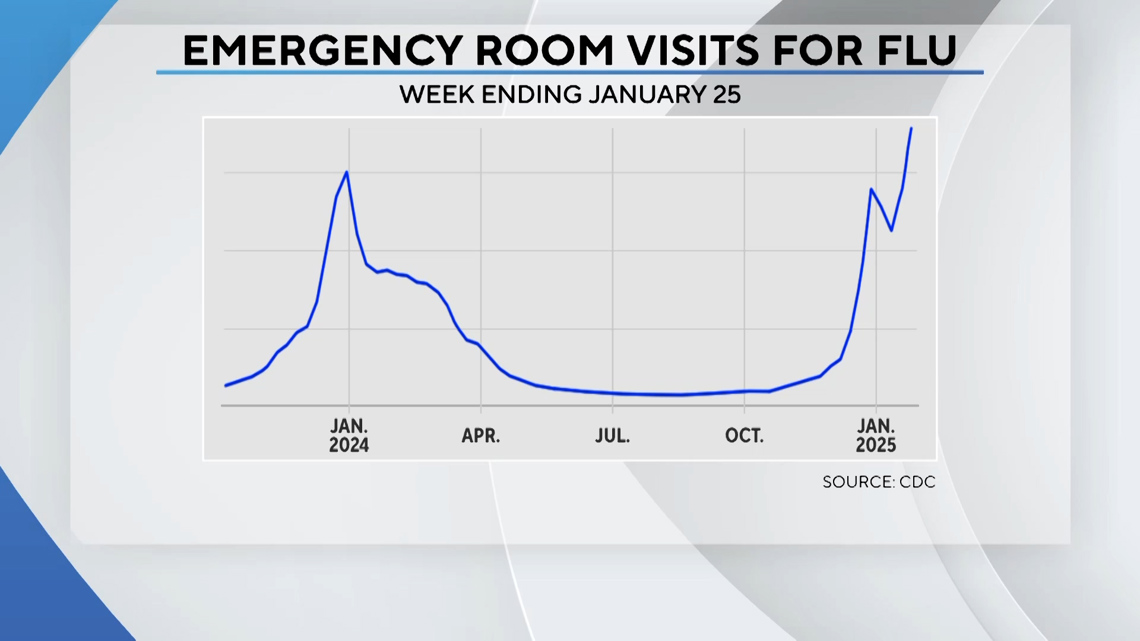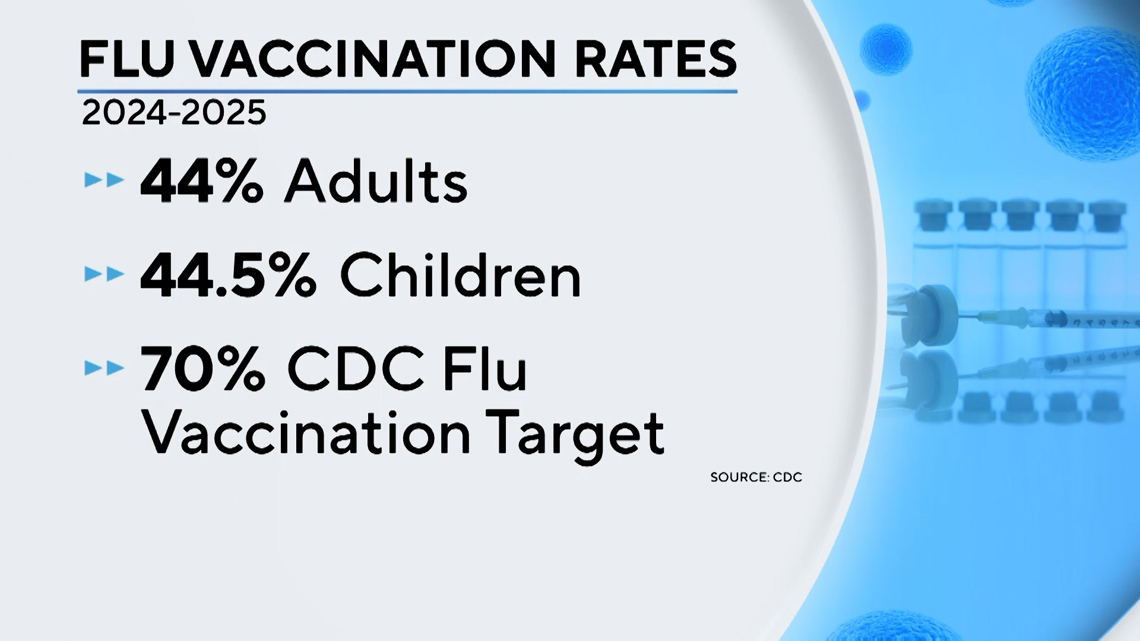NISD’s health services director said even if a licensed nurse is absent, a staff member is always on standby, trained for similar health emergencies.
SAN ANTONIO — A second surge of the flu is closing schools in several states, including Texas.
Godley ISD, near Fort Worth, just reopened. Staff shortages from a flu outbreak forced them to shut their doors for three days.
The latest flu numbers from Metro Health show cases rising in Bexar County. A graph from the last week of January shows numbers nearly doubling from Jan. 18-25.


The U.S. Centers for Disease Control and Prevention (CDC) released the latest influenza numbers, which are the highest they’ve been since 2009.
San Antonio’s largest school district is also feeling the effects. Many nurses are calling in sick in Northside Independent School District (NISD).
“Either they were sick with the flu or their own children were sick with the flu,” said Merry Garcia, BSN, RN, health services director for NISD. “On some days when the illnesses are high, occasionally we will have a few campuses that will not have a licensed nurse in the building.”
Every morning, Northside ISD’s Health Services Department takes roll call to ensure every school has a licensed nurse on duty.
On Thursday, however, Garcia said three nurses had to leave suddenly.
On Friday, several more nurses called in.
“Unfortunately there were three of them in our floating nurse pool that were covering nurses that were already absent,” Garcia explained. “Now we had to pull them because they’re sick or their child is sick.”
If NISD’s nurse reserves run out, Garcia says they’ll prioritize schools that need nurses the most.
For example, elementary schools tend to have higher numbers of flu each year.
“That’s typically where students forget to wash their hands. They’re more likely to put their hands to their mouths,” said Garcia.
Just because a nurse is absent doesn’t mean there’s an absence of care.
If an “empty” campus needs a nurse’s assistance, a member of the district’s Health Services Department will make themselves available. A neighboring school’s nurse can also stop by. Every campus is also equipped with backup personnel who are trained for emergencies. For example, they can administer epinephrine should a student experience a life-threatening allergic reaction.
During a typical flu season, elementary schools may send home seven to 10 children a day with high fevers. Larger schools could reach as many as 20 children, Garcia said.
KENS 5 reached out to all local school districts to inquire about flu numbers or any spike in absences in recent weeks. The majority who responded said they don’t track absences by reason.
Northside ISD found absences during January 2025 were pretty consistent with January 2024 absences, with some days slightly better. San Antonio Independent School District (SAISD) experienced a slight decline in absences—from 87.9% average daily attendance in January 2024 compared to 86.6% in 2025.
Randolph Field ISD, which also responded in time for our report, said while flu numbers are slightly elevated, they aren’t abnormal for February.
Right now, 41 states are reporting high or very high levels of flu, according to the CDC.


Emergency Room visits for the virus spiked nearly 30% compared to the week before.


The CDC says the percentage of children getting the flu vaccine is the lowest in six years, and fewer than half in the U.S. have been vaccinated.


“Flu A across the state is up, but in our area, they haven’t really seen a big difference from years past. I did talk with somebody today though who said, ‘Well, see what the numbers look like this week because it seems like a lot more people are out,'” said Christine Beck, MSN, RN, board member of the Texas School Nurses Organization (TSNO).
TSNO works to improve student’s health and wellness through education and advocacy for school nurses. It’s the only organization of its kind in the state.
Beck says flu season is among the busiest times for school nurses. On top of their day-to-day mental, emotional and physical care they provide, nurses will also be treating more children with a fever.
Plus, Beck adds that a nurse’s work isn’t complete when a sick student returns to school.
“Just trying to manage the symptoms even afterward, trying to get them through the day so they don’t miss more school when it isn’t necessary,” Beck added.
While some students and faculty members may want to tough it out when it comes to the flu, it’s a bad idea, Beck says. Taking care of yourself will help take care of others.
“If you have a high fever, just try to stay home and take care of yourself for a few days,” she said. “You’ll have a lot less complications and prevent it from spreading quite as much.”
In efforts to curb the spread of the flu, many school districts kept the maintenance routine of using disinfecting fog machines at night.
Doctors say as long as the flu virus is circulating, anyone who’s eligible should get vaccinated if they haven’t yet.
Garcia says it typically takes three to four weeks before we start to see a decline in flu numbers.
To help protect yourself this flu season, the City of San Antonio’s Metropolitan Health District recommends to:
- Regularly wash your hands with soap and water for at least 20 seconds, especially after coughing or sneezing
- Use a tissue or the inside of your elbow to cover your mouth and nose when coughing or sneezing
- Avoid touching your eyes, nose and mouth — especially before eating
- Avoid close contact with people who are sick
- If you are experiencing flu-like symptoms such as fever, cough, sore throat, or body aches, stay home to avoid spreading the virus
